About Our Timbers
Celery-Top Pine (Phyllocladus aspleniifolious) Native Conifer
See also: TASMANIAN TONE WOODS
Celery Top Pine grows mainly in the west of Tasmania and in other isolated areas on the east coast of Tasmanian where the climate is much dryer. Celery Top Pine is a slow growing tree, but it has become a very dominating species growing in the poorer soils of the cool temperate rainforests on the west coast of Tasmania. Growing to a height of between 15 and 40 metres, the bark of Celery Top is of a reddish brown grey colour with a knobbly surface. The leathery foliage has a distinctive celery like appearance.
The oldest known Celery Top trees growing are around eight hundred years of age.
Celery Top timber is pale white to yellow when cut and obtains a golden hue once dried.
A light very hard dense timber it is extremely strong, used as a flooring timber and for furniture making. It has been used in boat building and woodturning for many years.
Celery Top Pine is a light weighted timber with a fine grain and is easily worked. It is an excellent timber for woodturning and carving.

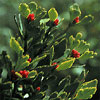
Leatherwood (Eucryphia lucida)
The Leatherwood species is a tree endemic to Tasmania it can be found in the wetter valleys and the rugged western mountain regions where rainfall of more than 250ml or (100 inches) is found.
Leatherwood can grow to 30 metres in height but most are found around 15 metres. Leatherwood can live for 250 years and grows well alongside the Sassafras, Blackwood and Myrtle species. It is also found growing as an understorey species in the Tall Eucalypt Forest of Tasmania.
Leatherwood is known world-wide for the fine honey that is produced from its pollen. Commercially Leatherwood timber is used for furniture manufacturing and veneer, it is also used for pulpwood. Leatherwood has good bending properties and also produces beautiful burl wood, this wood is rare and is highly prized, as is Leatherwood Fiddleback.
Excellent for woodturning; Leatherwood is an easily worked timber.



Tasmanian Myrtle(Nothofagus cunninghamii)
See also: TASMANIAN TONE WOODS
Myrtle flourishes in the cool temperate rainforests of Tasmania, and is found growing throughout the state. Found more frequently in the west and north west, Myrtle, will dominate a moist sheltered environment with rich and fertile soils available. Myrtle is often associated with the Sassafras species. A slow growing tree reaching a maximum height of 30 or 40 metres, the Myrtle tree can live for five hundred years.
Nothofagus cunninghamii, does not resemble the European Myrtle, and is not related. It became known as "Myrtle" only through common usage of the early timbermen.
Myrtle is a beautiful timber with deep rich colours of red, orange, brown and also pink. Myrtle produces beautiful burlwood and also Tiger Myrtle which is created by spalting. Tasmanian Myrtle is used commercially for furniture manufacturing and veneers.
An easily worked timber Myrtle is highly praised by woodturner's and furniture makers. Excellent for woodturning and carving.
Sassafras (Atherosperma moschatum)
See also: TASMANIAN TONE WOODS
Sassafras is an understorey evergreen tree and grows extremely well throughout the cool temperate rainforests of Tasmania. Sassafras trees are very dominant, the largest examples of the Sassafras species can be found in gullies in moist well drained soils, these trees can grow to a height of 45 metres and a meter in diameter.
The Sassafras tree can be found growing almost totally covered in lichen and has a lifespan of around two hundred years.
Sassafras has many varied and beautiful colours. Blackheart Sassafras timber is infected with a fungal virus in the heartwood, creating a beautiful streaking stain of black, brown and greenish colouring. The colours of Sassafras make it a popular timber.
A soft light and strong timber that works easily, Sassafras is used extensively for furniture manufacturing, cabinet making, veneers, panelling, woodturning and carving.
Sassafras polishes to a high finish and is highly regarded in the furniture trade. Excellent for woodturning and carving.


Blackwood (Acacia melanoxylon) Wattle species
See also: TASMANIAN TONE WOODS
The Blackwood, is the tallest of the wattle family and grows to a height of 50 metres. Blackwood grows in most conditions and is prevalent throughout Tasmania's native forests. The Blackwood tree reaches it's full potential in Blackwood swamps of the north west coast. Also found growing as an understorey species in the wetter Eucalypt forests of Tasmania, the Blackwood tree has a characteristic hard, rough and furrowed bark.
Timber colouring of golden browns, deep browns and red browns make the Blackwood a premium decorative hardwood. Widely used for cabinet and furniture making, it is also used to produce veneers and panelboard. Long recognised as a decorative woodturning timber, Blackwood is also highly regarded for the beautiful fiddleback timber it can produce. Blackwood is used also in the manufacturing of pianos and gunstocks.
A beautiful woodturning timber that is easily worked.
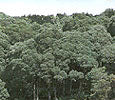

Ti Tree (Leptospermum lanigerum)
The Ti Tree family is quite large, 80 Leptospermum species are known to Australia.
Leptospermum lanigerum, usually a shrub growing to 3 metres it favours a damp environment and grows thickly, often forming thickets with many small diameter stems. It can grow to a height of 18 metres in Tasmania as a tall, thin tree.
Leaves are a greyish green with white petalled flowers typical of the Leptospermum species. Small, woody fruits containing seeds appear after flowering, the fruits will remain unopened until removed from the Ti Tree plant or the plant eventually dies.
The timber of The Tea Tree is a brown to darkish brown, and can have figuring of darker streaks, known as Blackheart Tea Tree. Excellent for wood turning and small items of furniture.

Horizontal Scrub (Anodopetalum biglandulosum)
Tasmanian endemic species found in the wetter areas, Horizontal or (Horizontal Scrub) attains its name from the forming of thickets of near horizontal stems, which can become like raised platforms of thick vegetation. Horizontal Scrub, proved a most impenetrable hazard to the early explorers of Tasmania, as it does with bushwalkers and the hikers today. Horizontal has become known as "The bushwalkers curse".
Growing to a height of 10 metres it grows to small diameters. The colouring is pale to light brown with a very fine grain and is a hard and immensely strong timber, resilient and springy it has remarkable bending properties. Long used for the manufacture of axe and also broom handles, it has only recently become a popular craftwood.
The bark of Horizontal Scrub remains on the wood even after heavy wear and is ideal for rustic furniture and bushcraft. Used also for decorative handles on cooking utensils etc.
Horizontal Scrub timber, is easy to turn, plane, and cut, it polishes to a high finish. An easy to turn timber Horizontal is ideal for smaller items.

Native Musk (Olearia argophylla)
The Musk is an understorey species, found in the rainforests and wetter regions of Tasmania, especially along river banks. A flowering shrub or tree growing to a height of between five and fifteen metres, it has a musk scent and has broad serrated dull green leaves with a white underside. Olearia argophylla, produces many clusters of attractive creamy white daisy flowers during the spring months in Tasmania.
The wood of the Musk tree is a soft creamy brown, with the most beautiful timber at the base of the Musk tree. The grain in this section is usually twisted and motley and in high demand by wood craftsmen, being used mostly for woodturning.
Commercially Musk is used mainly for veneer as the timber is dense and dries slowly. A difficult timber to dry without checking.
Musk has a strong aroma when turned and is ideal for wood turning.

Native Cherry (Exocarpos cupressiformis) Cherry Pine
The Tasmanian Native Cherry, resembles the Casuarina (She Oak) but they are not related. There are five Exocarpos species in Tasmania, Exocarpos Cupressiformis is the most widespread variety, found as an understory species of the more open Eucalypt forest and bushland in the east of Tasmania, it is often found growing in well drained and drier soils.
Exocarpos Cupressiformis has an emerald green bronze coloured foliage, and is a nicely shaped tree growing between 3 and 8 metres in height or higher, if sufficient water is available. The leaves are scale like with the fruit pedicel surrounding the seed an orange red colour. The pedicel resembles a swollen red rounded tube when it ripens.
Native Cherry timber was used for cabinet making in Tasmania's early years of settlement. Used widely in woodturning and also the manufacturing of golf clubs. Native Cherry is also known as Cherry Pine.
A dense timber with beautiful golden hues ideal for wood turning.

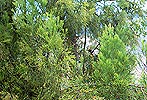

She-Oak (Allocasuarina verticillata) previously Casuarina stricta.
The She Oak, also know as Drooping She Oak, has very distinctive foliage with a wire like appearance, resembling the foliage of Native Cherry (Exocarpos cupressiformis).
Allocasuarina verticillata, is widespread in dry areas of eastern Tasmania. A small spreading tree growing between 4 and 11 metres, it is drought, frost and wind resistant. The She Oak, is commonly grown in gardens as an ornamental tree or a windbreak. It is also an excellent fuel burning wood, generating intense heat with little smoke.
The timber of the She Oak, is dense and very hard with a beautiful grain, the timber has a variety of colours from a pale yellow through to reddish brown tones. The best timber is at the base of the tree, good figure and bright coloured wood is found in this section. Growing to small diameters She Oak is mainly a craftwood, it is also used for veneer.
She Oak is a beautiful coloured wood ideal for wood turning.

Stringy Bark (Eucalyptus obliqua) Brown Top Stringy Bark
Eucalyptus obliqua was the first species collected at Adventure Bay, Bruny Island, by Tobias Furneaux, in 1773. The early settlers used the bark for the roofing of their huts.
The Stringy Bark is tall growing tree reaching a height of 70 metres at maturity and may grow to reach 90 metres. It grows in most areas of the from sea level to around 600 metres. The Stringy Bark prefers well drained soils and is found flourishing in the Tasmanian Forests. The bark is of grey red to brown colour and is very thick and fibrous with a course texture, the fibrous bark helps the tree survive through bushfires.
The timber of the Stringy Bark is a a straw brown colour it is very durable and has good bending qualities. Highly used in all forms of building and furniture making. The String Bark is also used in pulp and paper manufacturing. The Stringy Bark tree is the most valuable all purpose timber in Tasmania and also the most highly used.
The Stringy Bark tree also produces beautiful burlwood ideal bowls and platters etc.


Tasmanian Blue Gum (Eucalyptus globulus)
The floral emblem of Tasmania, the Blue Gum derives its name from the blue grey coloured foliage when a young tree, it is a medium to very tall tree which can reach 70 metres in height but is commonly found between 15 - 25 metres high, it grows quickly and has a course bark of a grey colour at the bottom section of the trunk, the branches of the upper trunk are smooth and light in colour with the bark hanging in long strips as it is shed from the upper trunk and the branches of the tree.
The timber of the Blue Gum is a pale straw to brown colour often with a blue green tint. The wood has an open texture with distinctive growth rings. Blue Gum is strong and very durable and has been used for a variety of uses including railway sleepers, piles, floorboards and also paper products. A very good structural timber.
Blue Gum produces beautiful "Gum Vein Burl" and is an excellent woodturning timber.
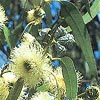

Swamp Gum (Eucalyptus regnans) Mountain Ash
The Swamp Gum is the largest flowering tree growing on earth, it towers 100 metres above the forest floor, exceeded only in height by the famous Redwoods of California.
The Swamp Gum grows quickly in areas of the Styx Valley, where Swamp Gums aged four hundred years are growing due to the area escaping bushfire for that period. This giant forest gum is found in the rainforests and wetter areas of the state.
The bark of this Eucalypt, has a course fibrous collar that extends up the trunk of the tree for over ten metres, the straight trunk of the Swamp Gum changes to a soft white grey green colour. The bark hangs in strips from the trunk and branches giving the tree a scruffy appearance. A giant Swamp Gum has been recorded at 134 metres high.
The Timber colour varies from light yellow brown to a pink red brown with highlights of a pink and cream. A hard wearing and dense timber with a high resistance to impact it is used for mainly for furniture, veneers and flooring and pulp, easy to work timber.

Alpine Ash (Eucalyptus delegatensis) WhiteTop Stringy-Bark
Alpine Ash, a tall straight tree growing to 90 metres in height is sometimes found stunted on exposed rugged summits. Alpine Ash is related to Eucalyptus obliqua (Brown Top Stringy Bark). The bark of Alpine Ash is a grey brown in colour and is fibrous on the lower half of trunk, continuing up the tree the trunk it is smooth pale grey, with the bark peeling in long strips on the upper part of the trunk and the branches.
Alpine Ash is a fast growing and dominant species found throughout the higher altitude forests of Tasmania, between 500 and 900 metres above sea level.
A hard dense timber with a high impact resistance, it is highly used for all types of building construction, flooring, panelling, veneers and laminates, Alpine Ash is also widely used in paper production. It is Commercially marketed as Tasmanian Oak.


Lancewood (Nematolepis squamea) Satinwood
Previously Named: Phebalium squameum
Lancewood is a hardy small growing tree attaining a height of around ten metres. It grows in the wet sclerophyll forests of Tasmania as a dominant understorey species to the much larger Eucalyptus obliqua (Stringy Bark).
The Lancewood tree has oval shaped leaves of a glossy green hue, the underside of the leaves has a silver colouring. The leaves emit a strong fragrance when crushed. Attractive white coloured flowers are produced by the Lancewood tree in spring.
Lancewood timber is dense and hard, it has golden colouring with a silky appearance. Lancewood turns well and is ideal for wood turning and veneer.

Banksia (Banksia marginata) Silver Banksia
The Banksia species is found throughout Australia, and named after Sir Joseph Banks. One of the first European scientists to visit Australia, Banks, arrived with Captain Cook in 1770. Banks, was acclaimed for his botanical work on plant species classification.
The Banksia marginata is found growing throughout Tasmania, a compact shrub or small tree of 12 metres. The Silver Banksia prefers drier regions and is resistant to salt winds. It produces striking cylindrical pale yellow flowers up to 10 cm. from February to July.
Banksia wood is soft and light with red colouring and small dark flecks, making a most beautiful grain. Generally thought unsuitable for commercial timber due to it's inadequate size. Banksia marginata is used highly by wood turners.
The seed pods of the Banksia species are also turned, producing outstanding items. A beautifully coloured soft and light wood, Banksia is excellent for wood turning.

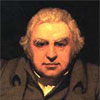
Silver Wattle (Acacia dealbata) Wattle species
See also: TASMANIAN TONE WOODS
The Silver Wattle, can grow to over 30 metres as a tree but also grows as a large shrub. Widely distributed throughout the Tasmanian dry Eucalypt forests and also bushland, Silver Wattle grows quite rapidly, and is a major understorey species growing in the wet Eucalypt forests. The bark of the Silver Wattle changes from soft and white bark when the tree is young, to a hard and dark almost black coloured bark when older.
It has a feathery like foliage of a green blue and striking bright yellow flowers in spring. Silver Wattle is related to the Black Wattle (Acacia mearnsii) this species has similar foliage of a dark green with cream coloured flowers and grows in the dryer regions.
The timber of the Silver Wattle varies in colour from a soft pink to a light brown with lighter coloured highlights. A good polishing timber, light in weight and quite hard it is used mainly as a craftwood Commercially for furniture , veneers and panelling.
Silver Wattle turns easily and is suitable for wood turning.


Waratah (Telopea truncata) Tasmanian Waratah
The Waratah is an upright shrub growing to around 3 metres, it can also be found as a small tree up to 10 metres high in Tasmania. The Tasmanian Waratah grows well in the moist acidic soils of the wet sclerophyll forest's, but requires good drainage to reach it's full potential.
Waratah is found as a stunted shrub in the subalpine scrubland from 600 to 1200 metres. Telopea truncata, has deep green narrow leaves growing to 10cm in length. The striking flowers of the Tasmanian Waratah, appear in loose clusters of 10 to 20 individual flowers at the ends of upright stems, the flowers appear between November and February and are usually a bright red, although a yellow variety of Telopea truncata is growing in the Mount Wellington Ranges near Hobart.
The timber of the Waratah is beautifully coloured with golden brown and orange hues. Used mainly as a craftwood Waratah turns well and is ideal for wood turning.

Black Wattle (Acacia mearnsii) Wattle Species
Black Wattle, is related to Silver Wattle (Acacia dealbata) and requires less moisture than does the Silver Wattle. The two species can be found growing together, however the Black Wattle does not grow in very wet area's, just as the Silver Wattle does not grow in the very dry area's.
An evergreen tree often growing to 20 metres in height. Black Wattlle has a darker coloured bark than does the Silver Wattle. The foliage of both species is very similar, Black Wattle has bottle green coloured foliage, the Silver Wattle has a more blue green coloured foliage. Flowering between November and December, the Black Wattle produces masses of cream coloured flowers with a slight scent. It is capable of resprouting from it's basal shoots following the devastation of bushfires, from these basal shoots the Black Wattle tree regenerates quickly.
The Black Wattle timber is similar to that of the Silver Wattle with a darker colouring. The Timber is light in weight and quite hard, it is used mainly as a craftwood Commercially used for furniture, veneers and panelling, it is a good polishing timber.
Black Wattle turns easily and is suitable for wood turning.

King Billy Pine (Athrotaxis selaginoides) Rare Timber
See also: TASMANIAN TONE WOODS
King Billy Pine, an endemic softwood as are Huon Pine, Celery Top and the Pencil Pine. Growing between 25 and 30 metres, it is a medium sized tree with bark of a fibrous nature and furrowed. It grows slowly and is found in the wetter and more mountainous areas of Tasmania. It is very susceptible to bushfire, if it escapes the devastation of fire, it can grow for half a Millennium. It has extremely beautifully coloured wood, with the sapwood being yellow and the heartwood a reddish pink to brown with impressive growth rings of distinct colouring. King Billy Pine has a straight grain a fine texture and is a very soft wood.
A pliable timber it is easily worked, with almost no shrinkage once the timber is seasoned. The natural oils of this timber preserve it extremely well. A beautiful woodturning and carving timber, ideal for bowls platters and smaller items. Used also for sounding boards for musical instruments.
King Billy Pine is a rare timber and available only in small quantities.


Huon Pine (Lagarostrobos franklinii) Rare Timber
See also: TASMANIAN TONE WOODS
An ancient native conifer, Huon pine has been dated at over two thousand years of age making this species one of the oldest living trees on the planet. Huon Pine trees still growing in the Tasmanian rainforests could be in excess of five thousand years of age.
Captain James Kelly and Dennis McCarthy discovered Huon pine in Macquarie Harbour and Port Davey in 1816. The first conifer to be exploited commercially, the timber was used extensively in the early days of settlement from whaleboats to household items.
In it's natural growing state Huon pine grows to 20 or 30 metres in height, though some may reach more than 40 metres. Growing only in the rainforests of Tasmania, it has no sap, an essential oil (Methyl Eugenol) keeps the wood durable for hundreds of years. This oil also makes the tree highly resistant to fungal diseases and insect attack and gives it wood it's colour and aroma. Huon Pine is the most highly prized of all the Tasmanian rainforests timber, it produces beautiful birdseye and burl wood.
A soft, mellow and oily timber, fine textured and light weight, very easily worked. Excellent timber for woodturning and carving, available in limited quantities.
Tasmanian Huon pine is an excellent soundboard species, most suitable for small body guitars. Older trees seem to produce a better tap tone.























